|
So pleased to announce this forthcoming anthology that I get to work on alongside the fabulous writers Keila V. Dawson and Lindsay H. Metcalf, with the amazing Karen Boss of Charlesbridge.
This is both a list of books that make great Valentine’s Day gifts Valentine’s Day love note to some of my favorite picture books, new and old. Warm fuzzies everywhere. This year, I am sharing the love by giving books to my children’s teachers and librarians on Valentine’s Day. Worm Loves Worm by J. J. Austrian, Illustrated by Mike Curato Jane Yolen called it “a word perfect (and picture perfect) picture book, and I couldn’t agree more. Worm Loves Worm is a simple story, with simple text, about simple invertebrates, that boils down all the complexities that adults attach to words like marriage to the simple point that love is love. In Mike Curato’s own words: “In Worm Loves Worm, no matter the opinions and criticisms of others, Worm and Worm hold fast to what is most important to them: each other… People will love who they love. This is what makes us human. This book is a celebration of love.” Valentine: Yes, Worm and Worm, it really is that simple. Love you both. Be a Friend by Salina Yoon Be A Friend is a sweet story about a little boy named Dennis who only communicates through mime. He feels isolated and alone until a classmate, Joy, reaches out to him and they become friends. Salina Yoon’s illustrations are charming and the simple text lets the visual storyline of acceptance and love shine through. Valentine: [Gestures unwrapping a gift of Be A Friend] [Hugs self] [Smiles] Stella Brings the Family by Miriam B. Schiffer, illustrated by Holly Clifton-Brown Stella Brings the Family is set on Mother’s Day, but the message of a child’s love for her family is perfect for Valentine’s. Stella is a little girl with two dads, who is told to invite her mother to a school Mother’s Day party. Unlike the adults in charge of party planning, Stella realizes that her family is really made up of all of the adults who love and support her every day. Valentine: Happy Valentine’s Day to all of you! Really, ALL of you! I Love You, Stinky Face
by Lisa Mccourt, illustrated by Cyd Moore An oldie-but-goodie, I Love You Stinky Face is one of my favorite bedtime read-aloud books. The text and illustrations work together to create a comforting, yet silly, reassurance of love and complete acceptance of the child by the mother. The child main character is dressed in gender-neutral clothing and is never identified with a gendered pronoun. Valentine: I made you this Valentine out of bugs and slime. I love you, my little swamp monster. Like the rest of the country, I grieve for the families and community of the nine people killed in Charleston, even though I do not know them. I am horrified by the violence and repelled by the hate. But I am not shocked or surprised. And that lack of shock or surprise also makes me grieve. I have been struggling with how to talk to my kids about the news. A friend of mine who spent years working for peace in South Sudan, has put out a call to her American friends who are parents to talk frankly with their kids about racism. In her words: “The reality is that we talk to our kids all the time about uncomfortable topics. We do this all the time. It’s called parenting. But for some reason, race is a very uncomfortable topic for most of my white friends and many are unwilling to talk to their children openly and honestly about race.” As a white parent myself, I realize that most of the conversations about race I have had with my kids have fallen into the “diversity is good” category. The “everyone is different, but we all have unique talents to contribute to the world” conversation. Or the geek version: “Race is a social construct, what we construct as racial differences are a tiny percentage of genetic variation in the human population.” Race is a social construct. Racism and racial inequality are the social reality we all live within. Talking about racism can be uncomfortable. But yeah, those uncomfortable conversations are called parenting. Or teaching. As Maurice Sendak often pointed out, childhood is difficult and full of danger. Children know that terrible things exist in the world. We need to let kids know we are willing to talk. "The children know. They have always known. But we choose to think otherwise: it hurts to know the children know. If we obfuscate, they will not see. Thus we conspire to keep them from knowing and seeing. And if we insist, then the children, to please us, will make believe they do not know, they do not see. They are remarkable–patient, loving, and all-forgiving. It is a sad comedy: the children knowing and pretending they don’t know to protect us from knowing they know." — Maurice Sendak To get those conversations started, here is a list of amazing picture books that go beyond surface discussions of diversity to explore racism and discrimination head-on. Explore them with your kids. Use them to spark conversations. Historical FictionNew Shoes by Susan Meyer (illustrated by Eric Velasquez) Ella Mae needs new shoes but is forbidden to try them on in the store. Humiliated by the shoe shop owner, she and cousin Charlotte collect old shoes, refurbish them, and open their own shoe store where everyone is welcome to try on the shoes. The emotional impact of Eric Velasquesz’s incredible illustrations pairs with the spare, but gut-wrenching text. The Other Side by Jacqueline Woodson (illustrated by E.B. Lewis) Two girls whose lives are divided by a fence that separates the black side of town from the white side strike up a friendship. The award-winning author and illustrator team pair perfectly in this lyrical story of kids circumventing adult rules of segregation. Segregation is a backdrop to the unfolding friendship, presented as “that’s the way things are.” Freedom Summer by Deborah Wiles (illustrated by Jerome Lagarrique) “I didn’t want to swim in this old pool anyway.” John Henry’s eyes fill up with angry tears. “I did,” he says. John Henry and Joe are best friends, across racial lines in the Jim Crow South. When their town is forced to integrate, the boys are excited to swim together in the public pool. Unfortunately, rather than opening the pool to all, town leaders have it filled in and paved over. FictionYou may have noticed that the above books are all historical. There are many more picture books about racism in the past than in a contemporary setting. Here are two discussion-sparking fiction books about discrimination that can be read as occurring in the imaginary present moment: Amazing Grace by Mary Hoffman (illustrated by Caroline Binch) Grace wants to be Peter Pan in the school play, but her classmates tell her she can’t play Peter because she is a girl and she is black. After her grandmother takes her to see a family friend perform as prima ballerina in Romeo and Juliet, Grace realizes she can play any role she puts her time, effort, and passion into learning. The actions of Grace’s classmates ring true for a contemporary audience, although the book is now old enough to be considered a classic. Something Else by Kathryn Cave (illustrated by Chris Riddell) Something Else is excluded by his classmates for being different, told he can not play with them or sit with them at lunch. When another creature shows up at his door, Something Else in turn excludes her. He then realizes that he has hurt someone the way he was hurt, and sets out to repair the relationship. The creatures in this book are imaginary beings, which allows the reader to fill in any possible reason for Something Else’s exclusion. NonfictionAs Good as Anybody by Richard Michelson (illustrated by Raul Colon) This book is a double biography of Abraham Joshua Heschel and Martin Luther King, Jr, which concludes with images of their march from Selma to Montgomery. The book paints parallel stories of the anti-Semitism that Herschel experienced growing up in Nazi Germany, and the racism King encounters in his American childhood. When Marian Sang: The True Recital of Marian Anderson by Pam Munoz Ryan (illustrated by Brian Selznick)
The biography of Marian Anderson, whose life spanned a near-century of social change. Marian never gives up her commitment to her art, despite discrimination that dives her to leave America for Europe. The book concludes with a wordless spread of famous concert at the Lincoln Memorial in 1939. I cry every time I read it. Every. Time. Ten years ago, when I was searching for books about different family structures, there were only a couple. Happily, there are more and more being published each year. Here are some of my favorites to read and to share. Who’s In My Family?: All About Our Families (Let’s Talk about You and Me) Written by Robie H. Harris, Illustrated by Nadine Bernard Westcott (2012) This simple yet charming book presents a wide variety of families, in a matter of fact way that is accessible and appealing to preschoolers. For example: “Children are born into their families or adopted into their families.” The book starts at the zoo with children pointing out different animal families, and then transitions to talking about human families. Families are illustrated with different family structures, race, and ethnicities. The text explains simply and directly that families may eat different foods for breakfast, but who all like to do fun things together. All the World Written by Liz Garton Scanlon, Illustrated by Marla Frazee (2009) This is one of my favorite picture books. Period. I love reading this as a bedtime book. Scanlon’s text is a lyrical celebration of the beauty of everyday life, and Frazee’s illustrations tell a pictorial story that weaves together with the text to produce a whole that transcends each part. Why include this book in a list of books about family diversity? Because Frazee’s joyful illustrations follow several families as they go about their day, going to the beach, the farmer’s market, getting rained on, eating dinner, and going to bed. The families are diverse in age, race, family structure, and general quirky individuality, but all express warmth and love. There’s a reason this book has a Caldecott Honor sticker on the cover. It’s gorgeous. Everywhere Babies Written by Susan Meyers, Illustrated by Marla Frazee (2004) This adorable board book was a favorite at my house. Frazee once again illustrates a diverse range of families living with and loving their babies. A favorite page is the exhausted new moms with their newborn. The Family Book
by Todd Parr This is the book I read to my eldest. It has the familiar Todd Parr structure and bright, primary colored illustrations. The refrain in this book is “Some families are…” Young children love this book, and the other Parr books (It’s OK to be Different, The Feelings Book) but adults may tire of it after a few re-reads. |
AuthorJeanette Bradley loves penguins, art, and chocolate, though not all at once. Categories
All
|





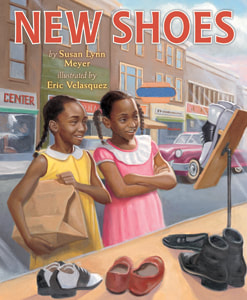
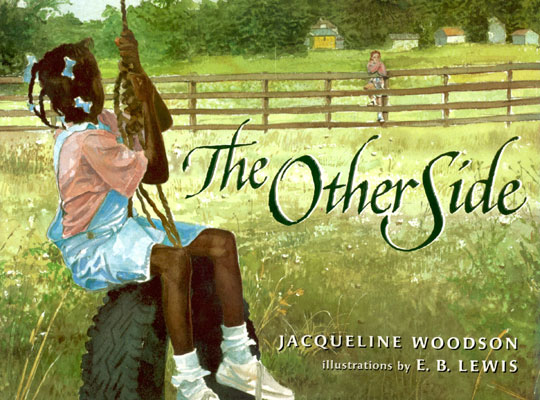




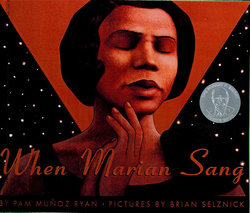
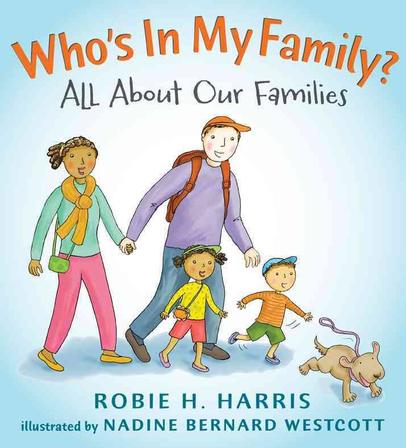

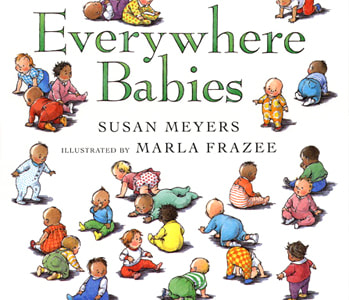

 RSS Feed
RSS Feed